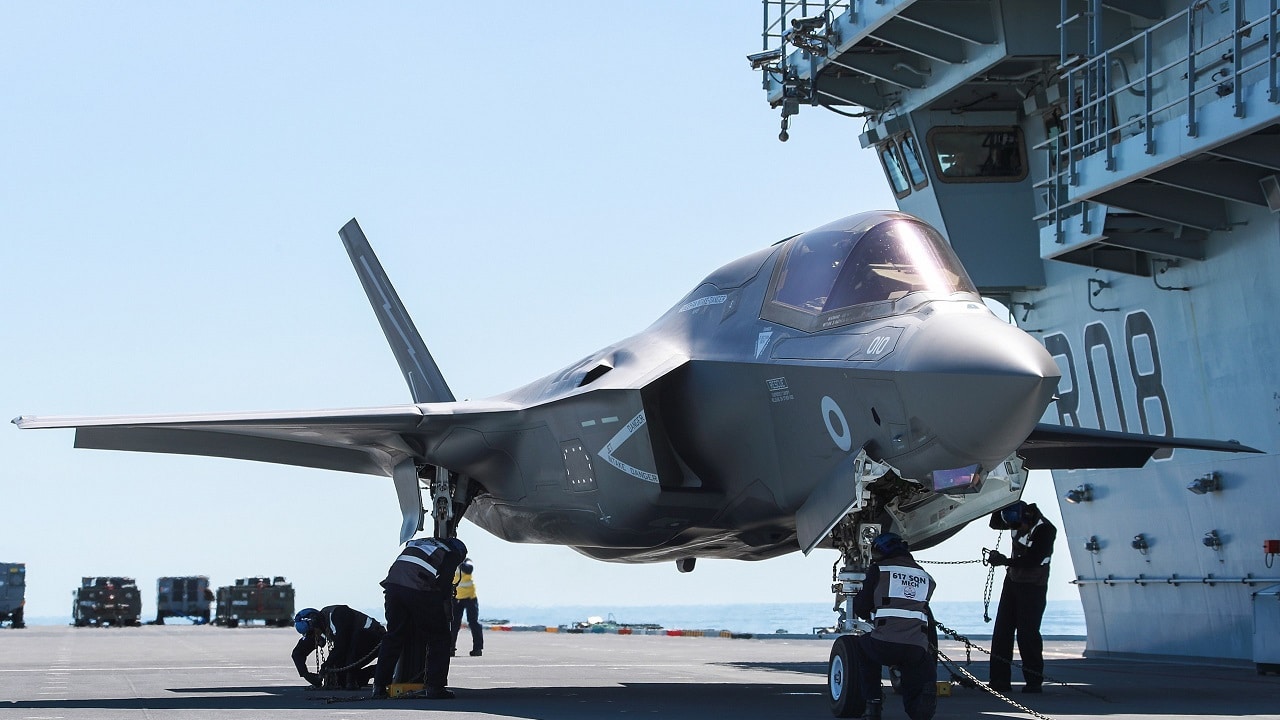HMS Queen Elizabeth is one powerful aircraft carrier – Britain once “ruled the waves,” and the Royal Navy was once the largest naval force in the world. In addition to being at the forefront of battleship design, during the First World War, the Royal Navy developed the first true aircraft carrier with an unobstructed flight deck.
That was then.
Today, the Royal Navy has a fleet of around 70 vessels, including 13 frigates and six destroyers. But as part of the “Global Britain” initiative, the fleet now includes two aircraft carriers. It marked a significant turn for the Senior Service of the UK, which had seen the decommissioning HMS Ark Royal in 2011.
Last year, HMS Queen Elizabeth – the largest carrier in service with the Royal Navy at 280 meters in length is three times as large as Ark Royal – completed her maiden voyage, which lasted nearly seven months and saw her head through the Suez Canal to the Far East and back. During that lengthy deployment, she was joined by eight other warships and some thirty-two aircraft. With 3,700 personnel, it was the largest Royal Navy flotilla to depart the UK in decades.
The Royal Navy’s Flagship
The lead ship of the new Queen Elizabeth-class of aircraft carriers, “Big Lizzie” as she is fondly known to her crew, is named in honor of the first HMS Queen Elizabeth, a World War I era super-dreadnought, which in turn was named after Queen Elizabeth I. Like her namesake, she has a Tudor rose-adorned crest and the motto, “Semper Eadem” – “Always the Same.”
Ordered in May 2008, the ship was laid down in 2009 and began her sea trials in 2017. She entered service in 2020. At a reported cost of £3.2 billion, the 65,000-tonne supercarrier is also the most expensive warship ever constructed for the Royal Navy. The carrier’s crew consists of around 700 officers and sailors, but including airwing, the number increases to 1,600.
Unlike U.S. Navy nuclear-powered aircraft carriers, she is a conventionally powered warship. Her four Wärtsilä diesel generators are each capable of producing a total of 11 Megawatts of power, or enough to sustain a town with a population of 25,000 people. She had a top speed of 25 knots.
Capable Warship
Another notable difference from the U.S. carriers – which feature catapults – is the fact the HMS Queen Elizabeth utilizes a ski jump style flight deck. The carrier’s planned airwing typically consists of 24 to 36 F-35B Lightning II Joint Strike Fighters – the Short Take-Off and Vertical Landing (STOVL) variant of the Lockheed Martin-produced fifth-generation stealth fighter – and 14 helicopters. The carrier is able to launch 24 of the vertical take-off/landing (VTOL) aircraft in five minutes, and has a maximum recovery rate of 24 aircraft in as many minutes.
In surge capacity, the carrier can carry in excess of 65 aircraft.
During her recent maiden deployment, the carrier embarked F-35Bs from the Royal Air Force 617 Squadron, “The Dambusters,” and the United States Marine Fighter Attack Squadron (VMFA) 211, “Wake Island Avengers.” In June 2021, those aircraft conducted combat operations in support of the UK’s anti-ISIS effort Operation Shader and the U.S. Operation Inherent Resolve in the Middle East. It marked the first time that U.S. fighters took part in a combat mission from a Royal Navy aircraft carrier since 1943 when U.S. pilots operated aboard HMS Victorious (R38) during the Second World War.
In addition to carrying what has been described as the most dominant fifth-generation jet fighter in service today, the carrier’s air wing is also composed of nine anti-submarine Merlin HM2 medium-lift naval helicopters along with four or five Merlin choppers for airborne early warning missions. For land operations, the carrier can also carry a mix of other helicopters including the CH-47 Chinook, AH-64 Apache, Merlin HC4, and Wildcat HM2.
In addition to the airwing, HMS Queen Elizabeth‘s armament consists of three Phalanx CIWS (Close-in weapons systems), four 30mm DS30M Mk2 guns, and six miniguns. The carrier is equipped with an S1850M long-range radar, Type 997 Artisan 3D medium-range radar, and Ultra Electronics Series 2500 Electro-Optical System (EOS).
While Britain may no longer “rule the waves,” the Royal Navy’s flagship will serve as an important symbol of “Global Britain” and as a powerful deterrent to the UK’s adversaries.
Now a Senior Editor for 1945, Peter Suciu is a Michigan-based writer who has contributed to more than four dozen magazines, newspapers and websites. He regularly writes about military hardware, and is the author of several books on military headgear including A Gallery of Military Headdress, which is available on Amazon.com. Peter is also a Contributing Writer for Forbes.

